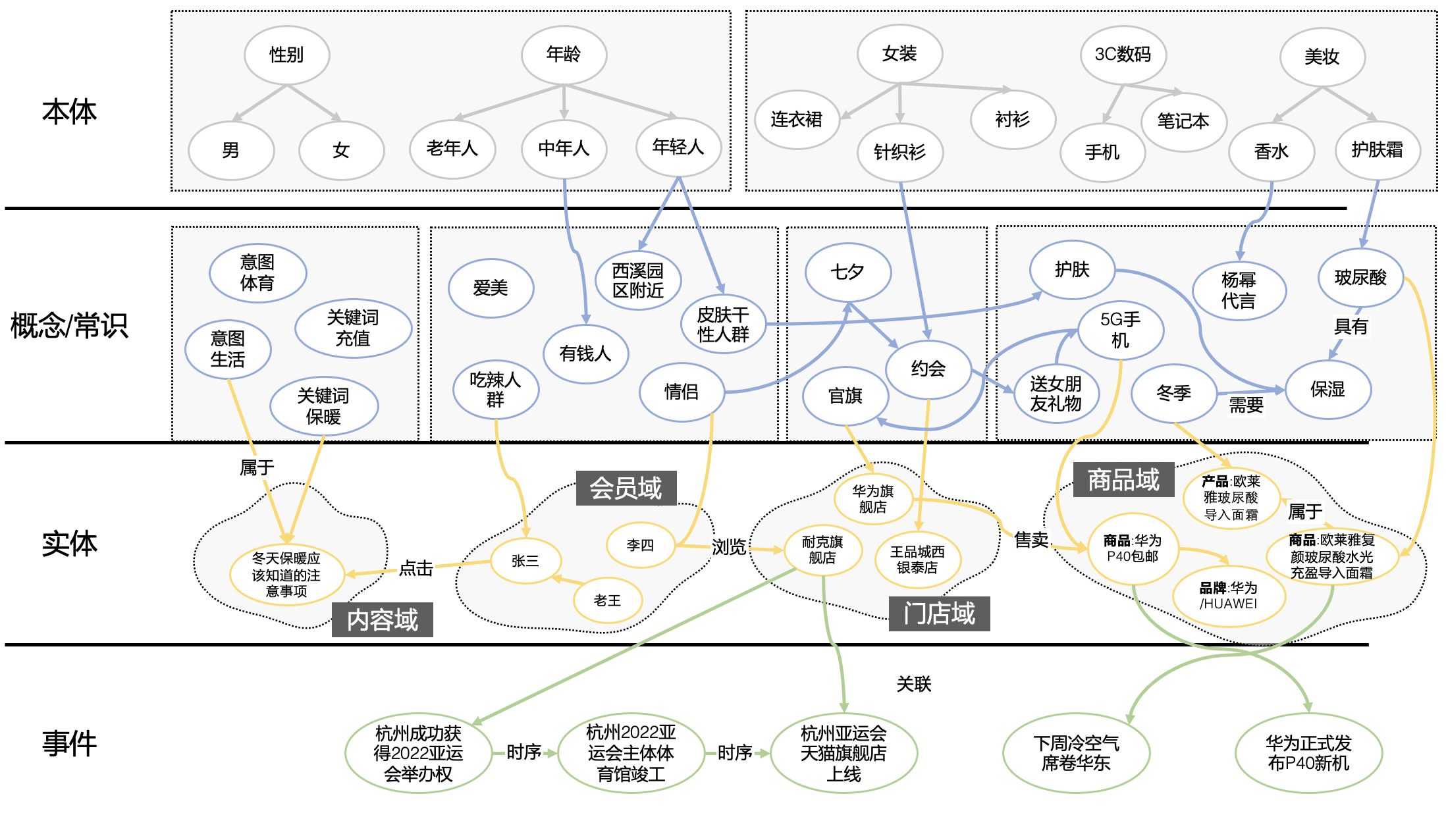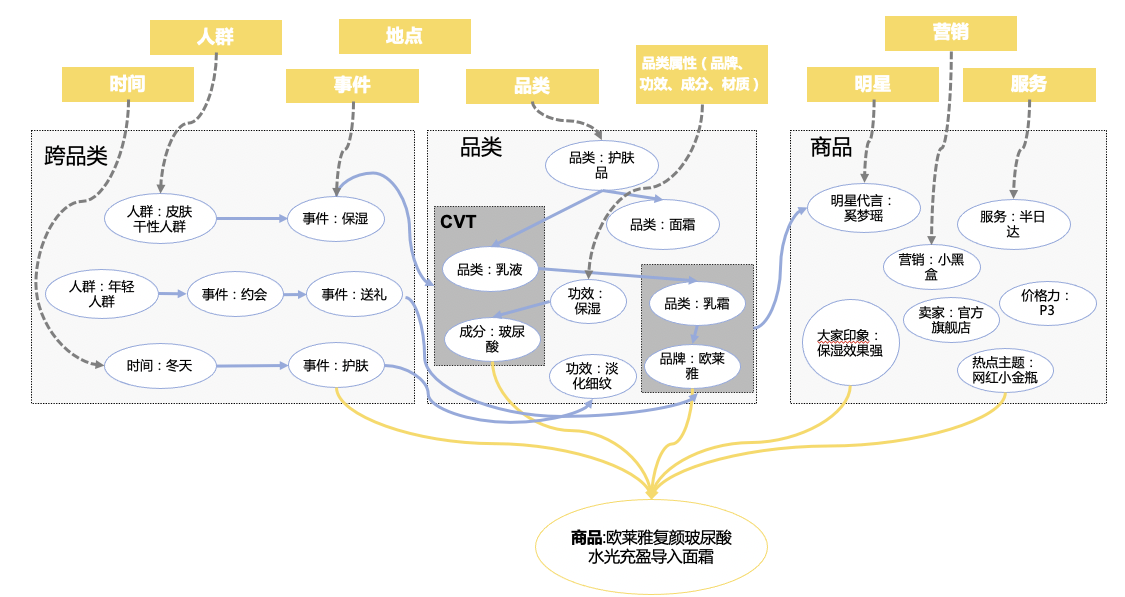Open Knowledge Graph for Digital Business
Openness promotes interconnection, connection creates value, and open knowledge graph is a powerful technical means to activate the potential of data elements. The value of data lies in information interaction throughout economic activities. The more open the data flow is, the more application scenarios it will spawn; the value of abundantly connected data is continuously amplified and promoted. Adhering to the concept of “using open business knowledge to discover social and economic worth”, we release the first large-scale open digital business knowledge graph, the AliOpenKG. The first version contains more than 1.8 billion triples, as many as 670,000 core concepts, 2681 types of relations, and it will be continuously maintained and expanded in the future. The knowledge of commercial elements in the graph contributes to an in-depth understanding of retail statistics, and it is conducive to digital intelligence-driven commodity operations and business growth, helps optimize market supply and demand matching, and generates more intelligent applications that are close to the needs of the scene. Furthermore, the open knowledge and standard specifications are conducive to the integration and circulation of various data elements in the business ecosystem and the in-depth development of digital business and economic ecology. Moreover, it helps small and medium-sized enterprises realize digital intelligence transformation. Using open business knowledge to discover social-economic worth also promotes interdisciplinary digital business and economy research, serving the national strategic needs of the healthy development of the digital economy. We will also establish a vertical domain-oriented knowledge graph evaluation benchmark based on this data set to promote further the development of knowledge map technology and its application in more vertical fields.
Commercial Elements Knowledge
Data-driven new retail has brought about a comprehensive upgrade of commercial elements. We can utilize standard product ontology establish standardized models; utilize concepts to model hierarchies of different granularities and expand the connotation and the scope of commercial elements with commonsense; utilize entity knowledge to model the relation between “people, product and place,” achieving the integration of various data in the business environment and promoting the in-depth development of digital business and economic ecology.


Standard Product Ontology Knowledge
Ontology refers to the representation, naming, and definition of categories, attributes, and relations between concepts, data, and entities. It represents commonly recognized and sharable knowledge to portray a standardized, normalized, recognizable, and unambiguous knowledge system about a specific business scenario. The digital business knowledge graph bears the essential work of product standardization and establishing the standard item model. The standard product ontology knowledge representation defines and describes the entities’ types, attributes, relations, and hierarchy system, establishing a standardized item model.
Retail Concept Knowledge
Concepts are human abstractions of objects and the cornerstone of human cognition of the world. A concept knowledge graph is a knowledge graph that models the hierarchical relation between concepts, which has broad application value in semantic search, and other scenarios. The retail conceptual knowledge graph models conceptual knowledge related to commercial elements into a conceptual hierarchy of different granularities, which helps users search, navigate and recommend the products they may want to buy.


Life Commonsense Knowledge
Life commonsense refers to the knowledge in daily life, covering health, diet, nutrition, home, life tips, and other aspects. The knowledge of commercial elements based on people-product-place involves people’s food, clothing, housing, and transportation and is closely related to people’s lives. Building a common-sense knowledge graph around the people-product-place elements helps further to expand the connotation and scope of commercial element knowledge. It can promote deep semantic understanding to serve people’s lives better.
People-Product-Place Entity Knowledge
The nature of the development of retail forms is the transformation and reconstruction of the three elements-“people, products, and places”, with the upgrading of social consumption capacity and the application of emerging technologies being its internal driving forces. The efficiency and operation laws of the three elements can be described by modeling the people-product-place entity knowledge and reconstructing their relationships. Structured people-product-place entity knowledge enables brand owners to observe global data, helps the platform identify problematic items, aids the industry in selecting products based on specific information, and matches people-product-place to improve the consumer shopping experience.

